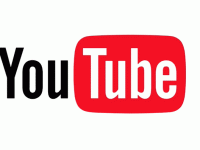YouTube has announced this Wednesday that from now on its default web video player will be HTML5 and not Adobe Flash. Therefore, HTML5 will now be the standard format for videos in this service in Chrome browsers, Internet Explorer 11, Safari 8 and the beta versions of Firefox.
In this change, YouTube's goal is to offer greater flexibility to developers, and consumers, and provide a benefit that for engineers extends "beyond web browsers."
YouTube began experimenting with this format in 2010, although at the time they considered it to be limited, so they did not make it their main platform. As time has passed, HTML5 has been improving and gaining more strength. According to Google engineer Richar Leider, "The time has come to ditch Flash by aging in favor of HTML5, which is currently used on smart TVs and other streaming devices."
In his argument he mentions five advances that have made HTML5 the best option for video streaming: Adaptive Bittrae, a technique that allows the quality of the image to adapt to the connection that the user is using at all times; the VP9 codec, which gives a higher video resolution by reducing the necessary bandwidth in a 35%; more encryption options; improvements in the broadcast of live videos and the option to play in full screen.
An abandonment that Steve Jobs started
This move is one more step towards the end of Flash technology. The movement of the streaming video service follows previous ones taken by other relevant actors in the scene, such as Netflix or Vimeo.
The mobile age is about less powerful devices, touch interfaces and open web standards, all areas where Flash falls short.
But the first step, at least the first significant one, was taken by none other than Steve Jobs. In 2010, Apple left Flash technology out of its devices, alleging in a letter from its founder that it was a product created in the PC era, falling short in features for other types of devices. "The mobile age is about less powerful devices, touch interfaces and open web standards, all areas where Flash falls short."
It was not, Jobs assured, a decision based on business issues but on technology. Flash was a closed product, owned by Adobe. It is true that Apple was also the absolute owner of many of its products, but its founder defended in that letter that all web standards should be open. "HTML5, the new web standard adopted by Apple, Google, and many others, allows developers to create graphics, fonts, animations, and transitions without relying on third-party plugins."
Just as Apple did at that time, other services have gradually given up using this system (only 11.9% of the websites used it in January of this year according to data provided by W3Techs and mentioned by Xataka). Adobe itself gradually reduced support for its product, and in August 2014 they launched Edge, an animation platform based on HTML5.
There are still some important services, such as Amazon or Flickr, that rely in part on this technology, but the resignation of YouTube is a blow and could be the final one for the disappearance of a technology that was born with the promise of making the web animated and interactive and that today has been surpassed by an environment that needs more agile and lightweight tools.
![]()








![Como solucionar 502 Bad Gateway | Cloudflare and Nginx [Engintron] – WHM/Cpanel](https://blog.index.pe/wp-content/uploads/2022/02/502-bad-gateway-70x70.png)


